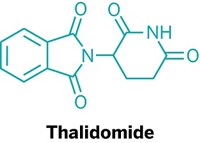Advertisement
Grab your lab coat. Let's get started
Welcome!
Welcome!
Create an account below to get 6 C&EN articles per month, receive newsletters and more - all free.
It seems this is your first time logging in online. Please enter the following information to continue.
As an ACS member you automatically get access to this site. All we need is few more details to create your reading experience.
Not you? Sign in with a different account.
Not you? Sign in with a different account.
ERROR 1
ERROR 1
ERROR 2
ERROR 2
ERROR 2
ERROR 2
ERROR 2
Password and Confirm password must match.
If you have an ACS member number, please enter it here so we can link this account to your membership. (optional)
ERROR 2
ACS values your privacy. By submitting your information, you are gaining access to C&EN and subscribing to our weekly newsletter. We use the information you provide to make your reading experience better, and we will never sell your data to third party members.
Biological Chemistry
Synthetic Steroid Garners Wider Role
Mifepristone, better known as the abortion drug RU-486, also has potential for use in diagnostic imaging and breast cancer treatment
by Stephen K. Ritter
March 2, 2009
| A version of this story appeared in
Volume 87, Issue 9
Mifepristone, better known as RU-486, is a synthetic steroid that outcompetes the pregnancy steroid hormone progesterone in binding to progesterone receptors. As a result, mifepristone is effective at inducing abortion and as a contraceptive. A research team led by Wolfgang S. L. Strauss of the University of Ulm, in Germany, and Hans-Wolfgang Schramm of the University of Graz, in Austria, now reports the synthesis of mifepristone derivatives that could take advantage of the drug's progesterone-receptor binding to advance diagnostic imaging and cancer treatment (J. Med. Chem., DOI: 10.1021/jm800985z). The researchers replaced one methyl group of the steroid's dimethylaminophenyl substituent with various linker groups to which a fluorescein dye or additional anticancer drug can be attached. These conjugates could be designed to retain or cleave the dye or anticancer drug once mifepristone enters cancer cells. In breast cancer cell assays, the team identified several derivatives for which adding the linker nominally affects mifepristone's bioactivity, a prerequisite to making the strategy practical.





Join the conversation
Contact the reporter
Submit a Letter to the Editor for publication
Engage with us on Twitter